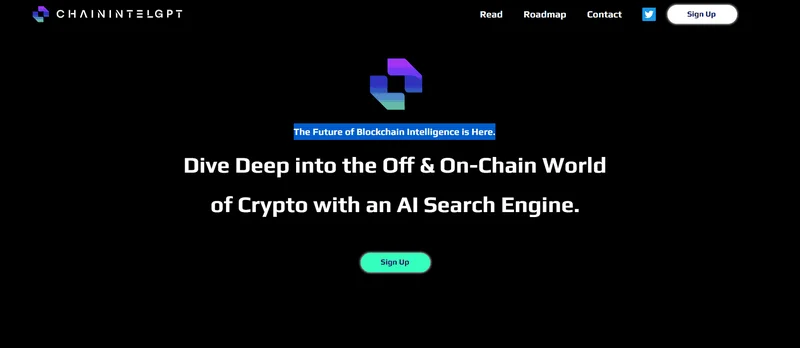The Data Doesn't Lie: Deconstructing the ChainOpera AI Hype Cycle
The ascent of ChainOpera AI ($COAI) was, by any quantitative measure, extraordinary. In the fall of 2025, the project became a case study in velocity, a vertical line on a chart that demanded attention. We saw a Fully Diluted Valuation (FDV) scream past $4 billion. We saw weekly gains of over 1,700%—to be more exact, 1,757% in just seven days following its listing on the Aster DEX. Daily trading volume for its perpetual contracts occasionally surpassed that of market mainstays like SOL and BNB.
On the surface, the narrative was compelling. A full-stack AI infrastructure project launching at the precise peak of both an AI market frenzy and a "BNB Season." The project’s proponents pointed to a confluence of brilliant strategic decisions: precise cycle timing, leveraging the surging BNB Smart Chain ecosystem, and a clever series of exchange listings that manufactured a liquidity storm. They sold a story of product-market fit, of an AI ecosystem so complete that it naturally converted 3 million "users" into a dedicated holder base.
It was a clean, powerful narrative. And as with most narratives in this market, a closer look at the underlying data suggests a far more fragile reality. The story of ChainOpera AI isn't about the triumph of technology; it's a clinical lesson in financial engineering and the physics of a hype cycle.
The Anatomy of a Hyper-Growth Narrative
To understand the collapse, one must first appreciate the architecture of the ascent. ChainOpera AI’s team, or whoever was orchestrating its market strategy, executed a near-flawless launch sequence. They didn't just release a token; they synchronized its debut with multiple, powerful market currents.
First, the timing was impeccable. By launching in late September 2025, they entered a market already "educated" by a wave of preceding AI projects. This allowed them to bypass expensive early-stage marketing and channel funds directly into development and what they called "online traffic operations." They were drafting behind the market leaders, then positioning themselves as the premium, next-generation alternative.
Second, they anchored their entire strategy to the BNB ecosystem. With BNB’s price running hot and on-chain activity on BSC reaching unprecedented levels, this was the equivalent of opening a storefront on the busiest street in the world. Their claim of accumulating 300,000 BNB-paying users for their AI Terminal App gave the project a veneer of fundamental adoption (The Secret Behind ChainOpera AI’s Explosive Success: Strategic Cycle Timing and a Fully Diluted Valuation Beyond $4 Billion). This user base conversion (from a claimed 3 million AI users down to 40,000 token holders) was presented as a successful funnel, bridging the classic Web3 gap between product users and token holders.

Finally, they engineered a liquidity event. The launch coincided with a massive surge in perpetual futures trading on BSC and was timed with the listing of another project, the stablecoin $XPL. This created a dual-listing event that amplified market attention, a "bundle buying" phenomenon that drove COAI’s single-day perps volume north of $6 billion. Adding listings on Bybit and Aster DEX with high leverage options was like throwing gasoline on the fire. It created a feedback loop: listings drove volume, volume drove attention, and attention drove price. The result was a parabolic chart that became its own best marketing tool.
The Structural Flaws Beneath the Surface
This is where the official narrative ends and my analysis begins. I've looked at hundreds of these launches, and the mechanics behind ChainOpera AI’s rise, while skillfully executed, were also riddled with the kind of structural red flags that give analysts pause. The entire edifice was built on a foundation that was, from a data perspective, profoundly unstable.
The first and most glaring issue was the token distribution. Data from BscScan showed that the top 10 wallet addresses held over 96% of the total COAI supply. Let me repeat that: ten wallets controlled virtually the entire network. The top 100 wallets held 99.74%. This isn't a decentralized project; it's a centrally controlled asset masquerading as one. The warnings from observers on social media, treating community chatter as a qualitative data set, pointed to this exact risk (What Are The Risks of Buying ChainOpera AI (COAI) in October?). One user noted, "If these wallets dump, the price could collapse to zero... it’s pure manipulation." This wasn't hyperbole; it was a simple statement of fact based on on-chain data.
And this is the part of the report that I find genuinely puzzling: how was this fact so widely ignored during the mania? The concentration risk was so extreme it should have been the headline of every analysis. Instead, the market was mesmerized by the price action, a classic case of confusing momentum for fundamental strength.
The second red flag was the massive discrepancy between the circulating supply and the Fully Diluted Valuation. With an FDV of over $4 billion, the market was pricing the project for perfection. Yet, data from CryptoRank showed that only 19.6% of the total 1 billion tokens were actually in circulation. This is a common tactic. A low float creates supply scarcity, making it easier for the price to move dramatically with relatively little capital inflow. It’s financial leverage. However, it also creates a massive, looming shadow of future inflation. The remaining 80.4% of tokens on a lengthy unlock schedule represent a constant source of potential sell pressure. The question was never if this supply would hit the market, but when.
The project's entire valuation was contingent on the "BNB Season" sentiment continuing indefinitely. It needed the hype to outrun the tokenomics. When the macro environment shifted, it had no defensive moat. The geopolitical shockwave from Donald Trump's tariff announcement on October 11, 2025, was simply the catalyst. The market-wide crash, which saw $19 billion in liquidations, was the event that exposed the projects with the weakest foundations. For an asset where 96% of the supply is held by ten wallets, a panic-driven market isn't a risk; it's a certainty. The house of cards was built, and the wind had finally started to blow.
The Numbers Had a Verdict All Along
Ultimately, ChainOpera AI wasn't a failure of technology or vision. It was a failure of structure, deliberately engineered for explosive, short-term gains. The same mechanisms that created its parabolic rise—the low circulating float, the extreme ownership concentration, and the reliance on a transient market narrative—made its collapse an mathematical inevitability. It was a high-stakes bet on sentiment, and when the sentiment turned, the underlying data delivered its cold, impartial verdict. The crash of COAI wasn't a surprise event; it was simply the resolution of a pre-existing condition written into its own blockchain.










